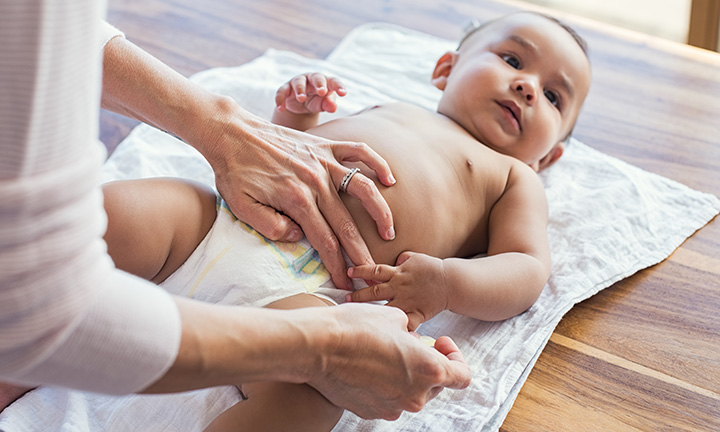Nappy rash, also known as diaper rash or diaper dermatitis, is a common condition that affects infants and toddlers. It is characterized by inflammation and redness of the skin in the diaper area. Nappy rash can be uncomfortable for the child and concerning for parents, but with proper care and treatment, it can be managed effectively.
Causes
- Prolonged exposure to wetness: When a baby’s skin remains wet for an extended period, it can lead to skin irritation and breakdown.
- Friction: Rubbing and friction between the diaper and the skin can contribute to the development of nappy rash.
- Chafing: Tight-fitting diapers or clothing can cause friction and chafing, leading to skin irritation.
- Irritants: Contact with certain substances like soaps, detergents, baby wipes, or creams containing fragrances or harsh chemicals can trigger nappy rash.
- Yeast or fungal infection: The warm and moist environment inside the diaper provides a favorable condition for the growth of yeast or fungal organisms, leading to an infection and exacerbating nappy rash.
Symptoms
- Redness and inflammation in the diaper area, including the buttocks, genitals, and thighs.
- Skin irritation, tenderness, and sensitivity.
- Dry, scaly patches or peeling skin.
- Raised bumps or small red dots.
- Discomfort, fussiness, or irritability during diaper changes or when the diaper area is touched.
Treatment
- Keep the area clean and dry: Change diapers frequently, ideally every 2-3 hours or as soon as they are soiled. Gently clean the diaper area with warm water and a mild, fragrance-free cleanser or use a damp cloth. Pat the area dry with a soft towel or allow it to air dry before putting on a fresh diaper.
- Use a barrier cream or ointment: Apply a thin layer of a protective ointment or cream that contains zinc oxide or petroleum jelly to create a barrier between the skin and moisture. This helps prevent further irritation and promotes healing.
- Avoid irritants: Use fragrance-free and alcohol-free baby wipes. Avoid using harsh soaps, detergents, or fabric softeners when washing cloth diapers or baby’s clothing.
- Choose the right diapers: Opt for breathable, absorbent diapers that are the correct size and fit well. Avoid tight-fitting diapers that can cause friction and restrict airflow.
- Give diaper-free time: Allow your baby to have some diaper-free time every day, providing an opportunity for the skin to breathe and reduce moisture buildup.
- Avoid plastic pants or tight-fitting diaper covers: These can trap moisture and exacerbate nappy rash. Instead, choose breathable diaper covers made of natural materials.
- Treat underlying infections: If a yeast or fungal infection is present, your healthcare provider may recommend an antifungal cream or ointment like Hydrozole Cream to address the infection.
- Seek medical advice: If the nappy rash persists, worsens, or is accompanied by signs of infection such as pus-filled sores, fever, or spreading redness, consult a healthcare professional for proper evaluation and treatment.
By following these measures and providing proper care, nappy rash can be effectively managed. However, if the rash persists or causes significant discomfort to your child, it is advisable to seek medical advice for appropriate diagnosis and treatment. To buy medicines for nappy rash and other medications like Azomax you can visit oladoc.




